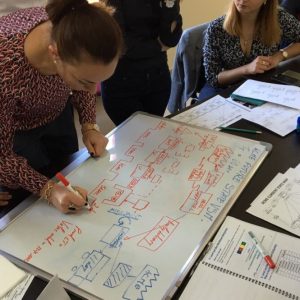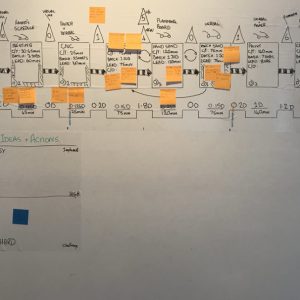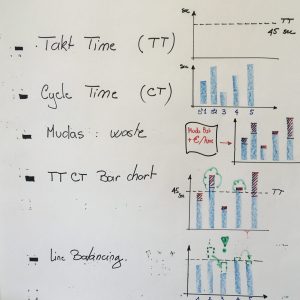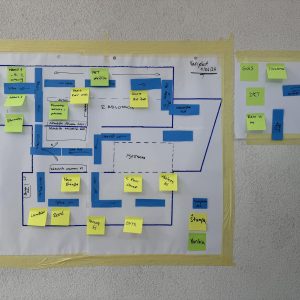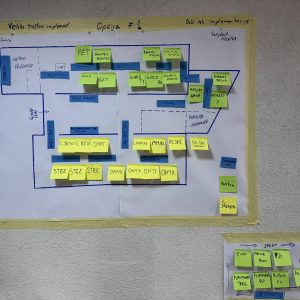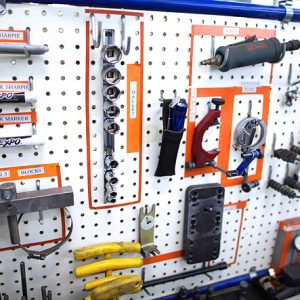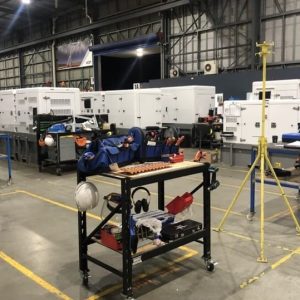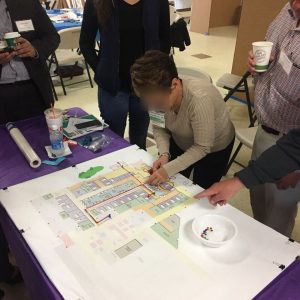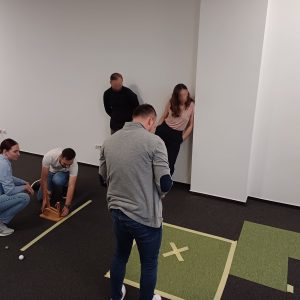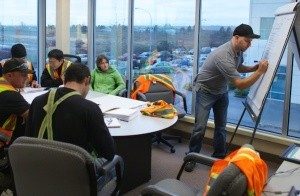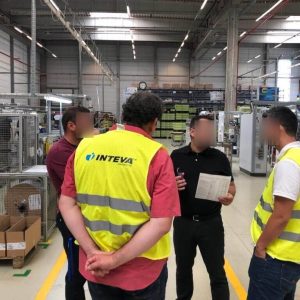Let's Match The Right Tools To Your Objectives For Maximum Efficiency!
= No Results
However, the effectiveness of these methodologies can vary depending on your organization’s unique circumstances. That’s where our expertise comes into play.
Our Lean Six Sigma Blackbelt experts will analyze your business environment to identify and implement the most suitable lean methodologies tailored to your specific needs. We offer a comprehensive range of lean methodologies, including:
5S Method
(Workplace Organization and Cleanliness)
Seiri (Sort),
Seiton (Set in Order), Seiso (Shine), Seiketsu (Standardize), and Shitsuke (Sustain).5S aims to improve workplace efficiency through organization, cleanliness, and standardization.
Our experts bring extensive experience in implementing the 5S methodology across diverse international companies.
Our approach ensures a systematic and collaborative process:
1. Preparation: Assess the area to be targeted for the workshop, gather necessary supplies such as cleaning materials, labels, and storage containers.
2. Introduction: Begin with an overview of the 5S methodology, explaining the importance of each step and its benefits for workplace efficiency.
3. Sort (Seiri): Engage participants in identifying unnecessary items in the area, categorizing them into keep, discard, or relocate piles.
4. Set in Order (Seiton): Collaboratively determine optimal layouts and storage solutions for the remaining items to minimize wasted time searching and moving.
5. Shine (Seiso): Conduct a thorough cleaning of the area, removing dirt, dust, and clutter to ensure a clean and safe workspace.
6. Standardize (Seiketsu): Establish clear guidelines and procedures for maintaining the organized and clean state of the area, including schedules for regular inspections and cleaning.
7. Sustain (Shitsuke): Foster a culture of continuous improvement by encouraging ongoing participation, providing training, and regularly reinforcing the importance of adhering to the 5S principles. Schedule periodic follow-up sessions to ensure sustained adherence to the 5S principles.
Kaizen - Continuous Improvement Principle
Method Implementation:
Introduction Session: Kick off with a brief overview of Kaizen's principles, highlighting the significance of continuous improvement and employee involvement.
Daily Tier Management Integration: Incorporate Kaizen principles into daily tier management meetings, where teams discuss performance metrics, identify issues, and propose and implement continuous improvement initiatives on a regular basis.
Gemba Walks: Engage in Gemba walks, where teams observe workplace processes firsthand, encouraging frontline input and idea generation.
Kaizen Events: Host focused workshops targeting specific areas for improvement, fostering cross-functional collaboration to implement rapid changes.
Feedback and Reflection: Conclude with a feedback session to capture insights, celebrate achievements, and plan for future Kaizen initiatives.
TMS (Tiered Management System)
Key Features:
Hierarchical Structure: TMS is structured into multiple tiers, each representing a different level of the organization, from frontline teams to senior management. This hierarchical structure enables communication and alignment of goals and priorities across all levels.
Regular Meetings: TMS involves regular meetings at each tier, typically daily or weekly, where teams review performance metrics, discuss issues, and collaborate on problem-solving. These meetings provide a forum for open communication, feedback, and decision-making.
Problem-Solving Focus: TMS emphasizes a problem-solving approach to address issues and improve performance. Teams use structured problem-solving methodologies, such as root cause analysis and Plan-Do-Check-Act (PDCA), to identify and address root causes of problems and implement effective solutions.
Method Implementation:
1. Tier Formation: Establish the different tiers of the management system, from frontline teams to senior leadership. Define roles, responsibilities, and meeting cadences for each tier to ensure clear communication and accountability.
2. Meeting Structure: Define the structure and agenda for meetings at each tier, including key performance metrics to review, issues to discuss, and problem-solving activities. Encourage active participation from all team members and promote a culture of open communication and collaboration.
3. Performance Review: Use meetings at each tier to review performance metrics and key performance indicators (KPIs), comparing actual performance to targets and benchmarks. Identify areas of improvement and prioritize actions to address issues and drive continuous improvement.
4. Problem-Solving: Facilitate problem-solving activities during meetings to address identified issues and challenges. Encourage teams to use structured problem-solving methodologies, such as the 5 Whys or fishbone diagrams, to identify root causes and develop effective solutions.
5. Feedback and Follow-Up: Provide feedback and follow-up on action items and decisions made during meetings to ensure accountability and progress. Monitor implementation of solutions and track results over time, adjusting strategies as needed to achieve desired outcomes.
SMED (Single Minute Exchange of Die)
Method Implementation:
1. Assessment Phase: Begin by conducting a comprehensive assessment of current changeover procedures, identifying all tasks and activities involved in the process.
2. Analysis and Segregation: Analyze and segregate internal and external changeover tasks, distinguishing between those that can be performed while the machine is running (internal) and those that require the machine to be stopped (external).
3. Parallelization and Simplification: Implement techniques such as parallelization, where internal and external tasks are performed simultaneously, and simplification, which involves eliminating or combining tasks to reduce overall changeover time.
4. Standardization and Training: Establish standardized procedures and provide training to ensure that the optimized changeover process is consistently followed by all relevant personnel.
5. Continuous Improvement: Foster a culture of continuous improvement by regularly reviewing changeover processes, gathering feedback from operators, and identifying further opportunities for reducing setup times and enhancing efficiency.
Shopfloor Management
Method Implementation:
1. Training and Education: Begin by providing comprehensive training to both management and frontline staff on the principles and practices of Shop Floor Management, emphasizing the importance of communication, collaboration, and shared accountability.
2. Visual Management: Implement visual management tools such as performance boards, production status displays, and standardized work instructions to provide real-time visibility into key performance metrics and facilitate communication and decision-making on the shop floor.
3. Daily Meetings: Establish a daily routine of short, focused meetings on the shop floor, where teams review performance metrics, identify and discuss issues, and collaborate on solutions in real-time. These meetings foster alignment, engagement, and rapid problem-solving among team members.
4. Gemba Walks: Conduct regular Gemba walks with management and frontline staff to observe operations firsthand, identify opportunities for improvement, and engage in coaching and mentoring to develop problem-solving skills and drive continuous improvement efforts.
5. Standardization and Continuous Improvement: Standardize processes and procedures where applicable to ensure consistency and reliability in operations, while also encouraging experimentation and innovation to drive ongoing improvements in productivity, quality, and safety. Regularly review and reflect on performance data and feedback to identify areas for further refinement and enhancement.
TPM (Total Productive Maintenance)
Method Implementation:
1. Education and Training: Commence with comprehensive education and training sessions to familiarize employees with the principles and objectives of TPM. Emphasize the importance of proactive maintenance, equipment reliability, and the role of operators in maintaining and improving equipment performance.
2. Equipment Assessment: Conduct a thorough assessment of existing equipment and maintenance practices to identify areas for improvement and prioritize focus areas for TPM implementation. The best way to conduct the assessment is a deep clean of the quipment, and documentation of findigs in terms of weak spots. Analyze historical data on equipment breakdowns, downtime, and maintenance costs to pinpoint critical areas of improvement.
3. Autonomous Maintenance: Empower frontline operators to take ownership of equipment maintenance through autonomous maintenance activities. Provide training and resources to enable operators to perform routine maintenance tasks, conduct inspections, and identify early signs of equipment deterioration or malfunction.
4. Planned Maintenance: Develop and implement a structured program for planned maintenance activities, including preventive maintenance, predictive maintenance, and scheduled inspections. Establish maintenance schedules, checklists, and procedures to ensure timely and effective maintenance interventions that minimize unplanned downtime and prolong equipment life.
5. Continuous Improvement: Foster a culture of continuous improvement by encouraging cross-functional collaboration, knowledge sharing, and participation in improvement initiatives. Implement tools and methodologies such as root cause analysis, Kaizen events, and performance monitoring to identify opportunities for optimization and drive ongoing improvement in equipment reliability, efficiency, and performance. Regularly review and analyze maintenance data and performance metrics to track progress, identify trends, and prioritize future improvement efforts.
TQM (Total Quality Management)
Method Implementation:
1. Leadership Alignment: Begin by ensuring that organizational leadership is fully aligned with the principles and objectives of TQM. Leaders should champion quality excellence, set clear expectations, and provide the necessary resources and support to enable TQM implementation.
2. Employee Engagement: Empower and engage employees across the organization to take ownership of quality improvement initiatives. Encourage active participation, idea generation, and problem-solving to leverage the collective expertise and creativity of the workforce.
3. Customer-Centric Focus: Foster a deep understanding of customer needs, expectations, and preferences throughout the organization. Implement mechanisms for gathering and analyzing customer feedback, and use this insight to drive continuous improvement in product and service quality.
3. Process Optimization: Implement systematic approaches to process improvement, such as Six Sigma, Lean, and Kaizen, to enhance efficiency, reduce waste, and eliminate defects. Encourage cross-functional collaboration and data-driven decision-making to drive sustainable improvements in quality performance.
4. Continuous Learning and Adaptation: Cultivate a culture of continuous learning, adaptation, and innovation. Provide training and development opportunities to build employees' skills and capabilities, and establish feedback loops to capture lessons learned and insights for future improvement initiatives.
Poka-Yoke - Error Prevention
Method Implementation:
1. Process Analysis: Conduct a comprehensive analysis of existing processes to identify potential sources of error or defects. Collaborate with frontline employees to gather insights and observations regarding common errors and recurring issues encountered during production.
2. Poka-Yoke Design: Engage cross-functional teams in the design and development of Poka-Yoke devices or systems tailored to address identified error-prone areas. Leverage creative problem-solving techniques to brainstorm innovative solutions that effectively prevent or detect errors before they escalate into defects.
3. Implementation and Testing: Implement the designed Poka-Yoke solutions in the production environment and conduct thorough testing to validate their effectiveness in error prevention. Solicit feedback from operators and stakeholders to identify any potential improvements or refinements needed to optimize the Poka-Yoke devices or systems.
4. Regularly review: update Poka-Yoke mechanisms to ensure their continued relevance and effectiveness in supporting error-free production processes.
Kanban - Visual workflow for efficiency
Kanban is a Japanese term meaning "visual signal" or "card," is a versatile methodology applicable across various industries, processes, and functions. It serves as a visual management tool for controlling workflow, managing inventory, and optimizing processes by signaling production needs and facilitating a smooth and efficient flow of work.
Method Implementation:
1. Understanding Kanban: Begin with an overview of Kanban principles and its applications in different contexts, including manufacturing, service industries, project management, and software development. Emphasize the flexibility and adaptability of Kanban to meet diverse business needs and objectives.
2. Designing Kanban Systems: Collaborate with stakeholders to design and customize Kanban systems tailored to specific workflows, processes, or projects. Define key parameters such as workflow stages, work item types, and visual signaling mechanisms to effectively manage work-in-progress and optimize resource utilization.
3. Implementing Visual Boards: Set up visual Kanban boards or systems in the workplace to visualize workflow, track work progress, and highlight bottlenecks or inefficiencies. Use cards, sticky notes, or digital tools to represent work items and move them through the workflow stages, providing transparency and clarity to team members and stakeholders.
4. Establishing Pull-Based Systems: Implement pull-based systems where work is initiated based on demand signals from downstream processes or customers. Use Kanban cards or signals to trigger the replenishment of materials or the initiation of new tasks only when capacity allows, thereby minimizing waste and maximizing efficiency.
5. Sustainability: Foster a culture of continuous improvement by regularly reviewing Kanban metrics and performance data, such as cycle time, lead time, and throughput. Encourage teams to identify and address root causes of workflow inefficiencies or constraints, and experiment with process changes or optimizations to drive ongoing improvement and innovation. Regularly revisit and refine Kanban systems to adapt to changing business requirements and optimize workflow performance over time.
QRQC - Structured Problem Solving
Key Features:
- Quality and Process Focus: QRQC is not limited to addressing quality issues alone but also extends to process-related concerns. It emphasizes the importance of understanding the underlying causes of problems and implementing preventive measures to mitigate future occurrences.
- PDCA Methodology Integration: QRQC follows the Plan-Do-Check-Act (PDCA) cycle, a systematic approach for continuous improvement. It begins with planning and defining the problem (Plan), followed by implementing solutions (Do), verifying their effectiveness (Check), and making necessary adjustments (Act) to achieve desired outcomes.
Implementation Steps:
1. Problem Identification: Start by clearly defining the problem or issue at hand, whether it's related to product quality, process efficiency, or customer satisfaction. Gather relevant data and information to understand the scope and impact of the problem.
2. Root Cause Analysis: Conduct a thorough analysis to identify the root causes of the problem using techniques such as the 5 Whys or fishbone diagrams. Engage cross-functional teams to explore potential causes and contribute diverse perspectives to the analysis process.
3. Solution Implementation: Develop and implement effective solutions to address the identified root causes. Prioritize actions based on their potential impact and feasibility, and assign responsibilities to ensure timely execution of corrective and preventive measures.
4. Verification and Validation: Validate the effectiveness of implemented solutions through rigorous testing and verification procedures. Monitor key performance indicators and metrics to ensure that the problem has been adequately addressed and that similar issues are less likely to recur in the future.
VSM (Value Stream Mapping)
Key Features:
Process Visualization: VSM offers a visual representation of the end-to-end process, highlighting each step, decision point, and handoff involved in delivering a product or service. This visualization helps stakeholders understand the flow of materials and information and identify opportunities for improvement.
Waste Identification: VSM enables the identification and categorization of various types of waste, such as overproduction, waiting, unnecessary transportation, inventory excess, motion waste, over-processing, and defects (TIMWOOD). By mapping out these waste elements, organizations can prioritize improvement efforts and eliminate non-value-added activities.
Future-State Planning: VSM facilitates the development of future-state maps that depict an idealized vision of the process, incorporating improvements to eliminate waste, reduce cycle times, and optimize resource utilization. These maps serve as a roadmap for implementing changes and achieving desired performance outcomes.
Method Implementation:
1. Current-State Mapping: Begin by creating a current-state value stream map that documents the existing process from start to finish. Gather input from stakeholders, observe actual processes, and collect data on cycle times, lead times, inventory levels, and other relevant metrics.
2. Waste Analysis: Analyze the current-state map to identify and quantify areas of waste and inefficiency. Use techniques such as value-added analysis, process cycle efficiency (PCE) calculation, and spaghetti diagrams to pinpoint opportunities for improvement and prioritize action areas.
3. Future-State Design: Develop a future-state value stream map that incorporates targeted improvements to streamline processes, reduce waste, and enhance overall performance. Collaborate with cross-functional teams to brainstorm innovative solutions and design a more efficient and effective workflow.
4. Implementation Planning: Create an implementation plan that outlines specific actions, timelines, responsibilities, and success metrics for realizing the future-state vision. Ensure buy-in from key stakeholders and allocate resources accordingly to support the successful execution of improvement initiatives.
3P - Layout Optimisation
Method Implementation:
1. Project Initiation: Begin by defining the scope, objectives, and constraints of the 3P project, taking into account factors such as production volume, product mix, regulatory requirements, and safety standards. Establish clear communication channels and roles/responsibilities for project team members to ensure effective collaboration and decision-making throughout the process.
2. Current State Assessment: Conduct a comprehensive assessment of the current shop floor layout, including the physical space, equipment placement, material flow, and ergonomic considerations. Identify existing inefficiencies, safety hazards, and opportunities for improvement to inform the design of the future-state layout.
3. Future State Design: Collaborate with cross-functional teams to develop multiple conceptual designs for the future-state shop floor layout. Consider factors such as workflow optimization, equipment placement, workstation design, material handling, and safety protocols. Use techniques such as value stream mapping, spaghetti diagrams, and 5S principles to visualize and evaluate different layout options.
4. Prototype Development and Testing: Develop physical or virtual prototypes of the selected layout designs to assess their feasibility, functionality, and ergonomics. Conduct simulation studies, pilot tests, and walkthroughs to identify potential issues or challenges and refine the designs accordingly.
5. Finalization and Implementation: Refine the selected layout design based on feedback from prototype testing and stakeholder input. Develop detailed implementation plans, including timelines, resource requirements, and risk mitigation strategies. Collaborate with suppliers, vendors, and other partners to procure equipment, materials, and resources needed to implement the new shop floor layout.
Spaghetti Diagram - Movement Optimisation
Hoshin - Process Balancing and Optimisation
Key Features:
Cycle Time: Cycle time represents the total duration required to complete a specific task or process, from start to finish. It includes all value-added and non-value-added activities, such as processing time, setup time, and wait time.
Takt Time: Takt time is the available production time divided by customer demand. It indicates the maximum amount of time allowed per unit to meet customer demand while maintaining a consistent production rate.
Method Implementation:
1. Operator Education: Provide operators with training on the methodology, explain measurement techniques, and outline expected workshop outcomes
2. Data Collection: Begin by collecting data on cycle time for each process or workstation within the production line. Measure the time required to complete each task or activity, including setup time, processing time, and any delays or interruptions.
3. Calculate Takt Time: Determine the takt time by dividing the available production time by the customer demand rate. Takt time serves as a benchmark for the ideal production rate required to meet customer demand efficiently.
4. Compare Cycle Time to Takt Time: Compare the cycle time of each process or workstation to the takt time to identify discrepancies and opportunities for improvement. If cycle time exceeds takt time, it indicates potential bottlenecks or inefficiencies that need to be addressed.
5. Optimize Cycle Time: Analyze the root causes of any discrepancies between cycle time and takt time and implement measures to reduce cycle time where possible. This may involve streamlining processes, eliminating waste, improving workflow layout, or investing in automation or technology.
6. Trials and Validation: Conduct trials and testing to validate the effectiveness of the new balanced way of working. Monitor production performance, cycle times, and adherence to takt time targets to ensure that the implemented changes deliver the desired improvements in efficiency and productivity
7. Creating New Standard Operation Sheet: Develop a new standard operation sheet documenting the optimized processes, workflow, and cycle times. Ensure that the sheet provides clear instructions and guidelines for operators to follow to achieve consistent and standardized production outcomes
8. Training Operators: Provide training and education to operators on the new standard operation sheet and best practices for achieving optimal results. Emphasize the importance of following standardized procedures, maintaining pace with takt time, and continuously monitoring and adjusting workflow to maximize efficiency and meet customer demand. Encourage active participation and feedback from operators to drive ongoing improvement and refinement of the production processes.
Daily Lean Walk - Sustainability
The Daily Lean Walk routine is a structured approach used in lean manufacturing to engage frontline employees in identifying and addressing operational inefficiencies on a daily basis. It involves conducting regular walks through the workplace to observe processes, identify waste, and foster a culture of continuous improvement.
Key Features:
Daily Engagement: The Daily Lean Walk routine encourages daily engagement and participation from frontline employees, providing them with opportunities to contribute their insights and observations to the improvement process.
Process Observation: During the walks, team members observe processes firsthand, identifying areas of waste, inefficiency, and opportunities for improvement. This real-time observation enables quick identification of issues and facilitates timely corrective action.
Continuous Improvement: By incorporating daily walks into the routine, organizations promote a culture of continuous improvement, where small incremental changes are made on a daily basis to drive overall operational excellence and efficiency.
Method Implementation:
Team Training: Begin by educating team members on the purpose and process of the Daily Lean Walk routine. Provide training on observation techniques, waste identification, and the importance of continuous improvement.
Daily Walks: Conduct daily walks through the workplace, with team members observing processes and identify potentials for improvement. Encourage active participation and open communication during the walks to ensure all observations are captured.
Issue Identification: Use the Daily Lean Walk routine to identify and prioritize areas for improvement based on observed waste, inefficiencies, and opportunities for optimization. Document issues as they are identified, and assign responsibility for implementing corrective actions.
Problem-Solving: Engage team members in problem-solving activities to address identified issues and implement corrective actions. Encourage collaboration and teamwork to develop innovative solutions and drive continuous improvement in processes and performance.
Performance Review: Regularly review the outcomes of the Daily Lean Walk routine, tracking progress on identified issues and measuring improvements in key performance metrics.
